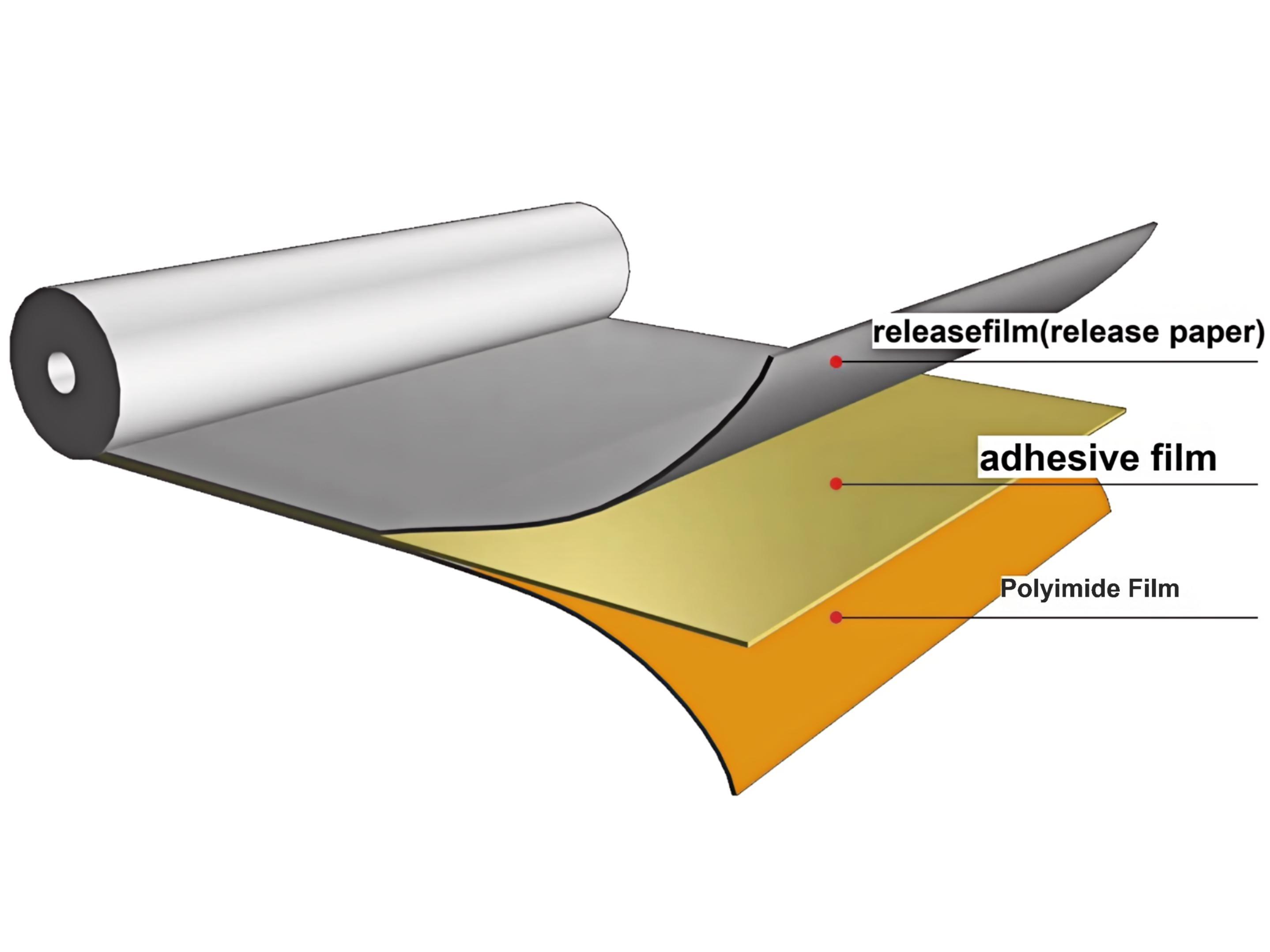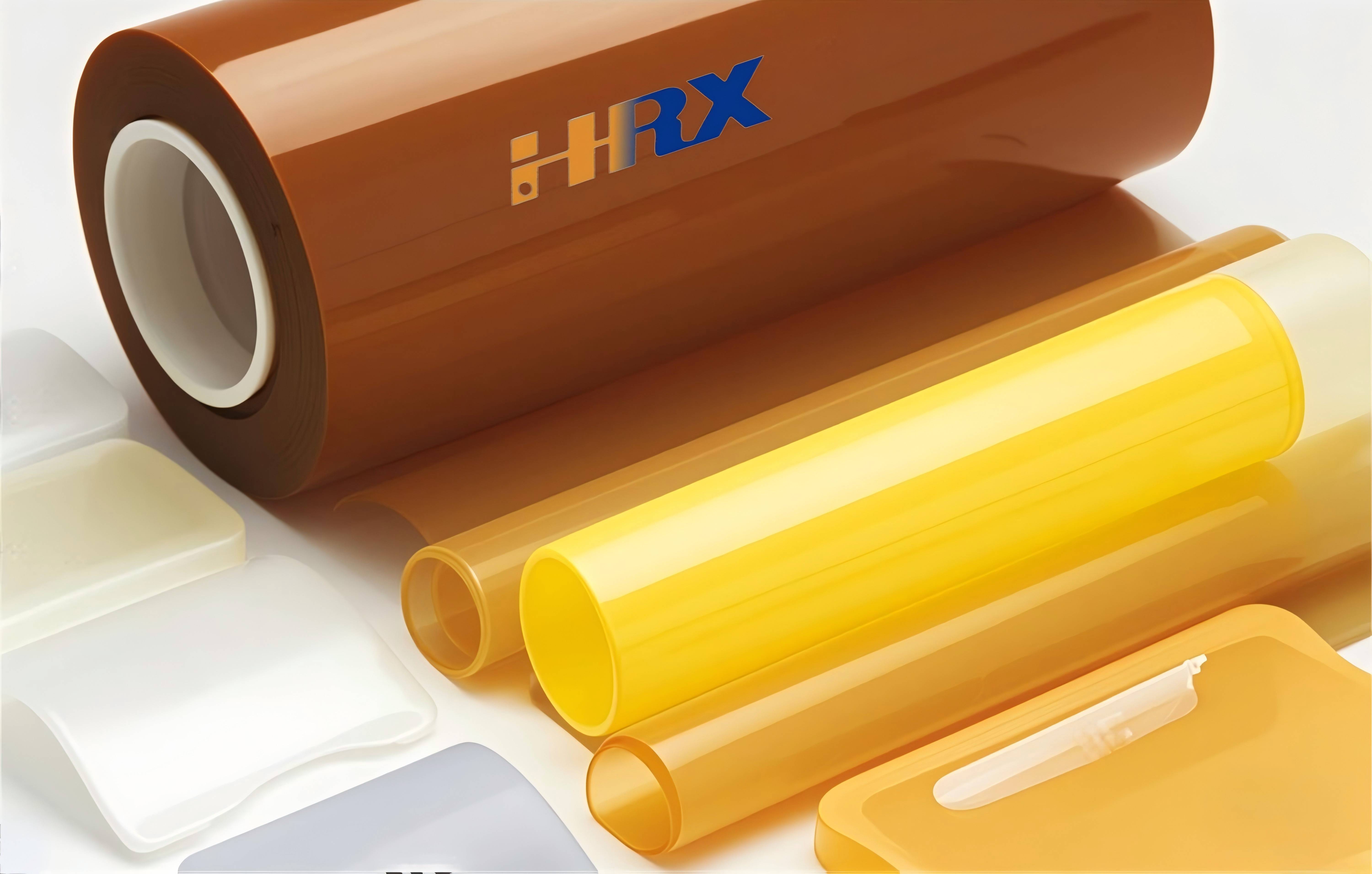Search
Base Film in FPC Production: Material Selection, Quality Control and Production Process
- Feb 27,2025
-
Share
Base Film, also referred to as the base membrane, serves as an indispensable and core component within the realm of Flexible Printed Circuits (FPC). It furnishes pivotal support and insulation functions for the circuit, playing a pivotal and irreplaceable role in defining the material performance, manufacturing process, and overall reliability of FPC. This article delves into the critical aspects of material selection, incoming quality control, subsequent production processes, and the key issues demanding meticulous attention.

I. Material Selection
1. Mechanical Properties
High tensile strength is an imperative mechanical property for the base film. It must endure the mechanical stress exerted during the intricate FPC manufacturing processes, such as multi - axis bending, high - speed rolling, and dynamic flexing. Polyimide (PI) films, for instance, are highly favored in the industry due to their remarkable tensile strength, which can reach up to several hundred MPa. This robust mechanical property ensures that the FPC remains intact and undamaged during the entire product life cycle, including the rigorous handling in automated assembly lines and the demanding usage scenarios.
Exceptional flexibility is equally crucial. A flexible base film empowers the FPC to be bent, folded, and twisted multiple times without incurring cracking or degradation of its electrical properties. Fluoropolymer - based films, in addition to their outstanding chemical resistance, exhibit excellent flexibility, making them the prime choice for applications with high - cycle bending requirements, such as in wearable electronics and flexible displays.
2. Thermal Properties
High - temperature resistance is of utmost importance, especially when the FPC is deployed in high - temperature operating environments or during the high - temperature soldering processes in FPC manufacturing. PI films, with their outstanding thermal stability, can withstand temperatures in the range of 250 - 300°C, thereby meeting the stringent requirements of most high - temperature processes in FPC production, such as reflow soldering and hot - air leveling.
A low coefficient of thermal expansion (CTE) is highly desirable. A low CTE ensures minimal dimensional changes of the base film with temperature fluctuations, effectively reducing the risk of thermal - stress - induced delamination, cracking, and electrical failures in the circuit. This property is particularly critical for high - reliability applications, such as automotive electronics and aerospace systems.
3. Electrical Properties
Excellent insulation properties are non - negotiable for the base film. A high dielectric strength, typically in the range of several hundred volts per mil for common FPC base films, is essential to prevent electrical leakage between different circuit layers, ensuring the integrity and safety of the electrical system.
For high - frequency applications, a low dielectric constant and low dissipation factor are of paramount importance. These properties play a pivotal role in reducing signal attenuation, minimizing electromagnetic interference (EMI), and ensuring the high - speed and high - frequency performance of the FPC, which is crucial for applications such as 5G communication devices and high - speed data transmission systems.
II. Incoming Quality Control
1. Inspection of Physical Appearance
Meticulous inspection for any visible defects, including micro - scratches, nano - scale wrinkles, and particulate impurities on the surface of the base film, is essential. Even a minute scratch, invisible to the naked eye but detectable through high - magnification microscopy, can potentially trigger critical issues in the subsequent circuit - making process, such as short - circuits, open - circuits, and impedance mismatches in the conductive lines.
Precise thickness measurement of the base film at multiple uniform points is crucial. The thickness tolerance should be maintained within the tightly specified range, usually ± a few microns. Non - uniform thickness can lead to significant variations in the mechanical and electrical properties of the FPC, affecting its overall performance and reliability.
2. Verification of Material Specifications
Rigorous verification of the material certificate provided by the supplier is necessary to ensure that the base film complies with the pre - agreed material specifications in terms of mechanical, thermal, and electrical properties. For example, the tensile strength, elongation at break, glass transition temperature (\(T_g\)), and dielectric strength values must precisely match those specified in the technical contract.
In - house sample testing, including advanced tensile tests, dynamic mechanical analysis (DMA), and thermal gravimetric analysis (TGA), is conducted to confirm the actual performance of the incoming base film. These tests help to unearth any latent quality issues that may not be evident from the material certificate alone.
III. Production Process
1. Handling and Storage
During handling, strict measures should be taken to avoid direct contact with the base film surface to prevent contamination. Workers are required to wear cleanroom - grade gloves, typically made of nitrile or latex, to prevent fingerprints, dust particles, and organic contaminants from adhering to the film. Contamination can severely affect the adhesion of the conductive layer and compromise the overall quality of the FPC.
The base film should be stored in a clean, dry, and temperature - and humidity - controlled environment. The recommended storage temperature is usually maintained at 20 - 25°C, and the relative humidity is strictly regulated at 40 - 60%. This optimal storage condition helps to prevent moisture absorption, which can cause swelling, delamination, and degradation of the base film.
2. Manufacturing Process
In the lamination process, precise control of temperature, pressure, and time is of critical importance. When laminating the base film with the conductive layer, an improper temperature can lead to insufficient adhesion, resulting in delamination, or over - curing, causing embrittlement and reduced flexibility. Advanced laminators, equipped with real - time monitoring and feedback control systems, are used to ensure accurate process control.
During the etching process, careful selection of chemical reagents and strict control of the etching time and concentration are essential. The etching solution must be formulated to selectively remove the unwanted conductive material without causing any damage to the base film. Over - etching can thin the base film, compromise its mechanical integrity, or even create pinholes, leading to electrical failures.
IV. Key Issues to Note
1. Supplier Management
Establishing long - term, strategic partnerships with reliable and certified suppliers is crucial. Regular audits of the supplier's production capacity, quality management system (QMS), and product consistency are essential. This proactive approach helps to ensure a stable supply of high - quality base films that meet the ever - evolving industry standards.
Close communication channels with the supplier should be maintained to address any changes in product requirements, such as new material specifications, environmental regulations, or emerging application demands. Prompt collaboration is essential to find innovative solutions and maintain product competitiveness.
2. Process Optimization
Continuous monitoring and optimization of the production process based on real - time data analytics, in - line inspection, and customer feedback are essential. For example, if there are recurrent issues with the adhesion of the conductive layer, advanced surface treatment techniques, such as plasma treatment or chemical priming, can be explored, and the lamination process parameters can be fine - tuned.
Investment in research and development (R&D) is vital to explore novel materials, such as graphene - enhanced composites, and innovative manufacturing processes, such as additive manufacturing for FPCs. These R&D efforts can lead to significant improvements in the performance, miniaturization, and cost - effectiveness of FPCs.

Shenzhen Huaruixin Electronics Co., Ltd.'s Implementation
As a leading professional manufacturer of FPC&PCB&Rigid - Flex Printed Board, Shenzhen Huaruixin Electronics Co., Ltd. adheres strictly to the above - mentioned industry - best practices and international standards.
1. Material Selection
The company boasts a highly skilled and experienced material research and development team. They conduct in - depth research on a wide spectrum of base film materials, leveraging advanced material characterization techniques, such as X - ray diffraction (XRD) and Fourier - transform infrared spectroscopy (FTIR). Based on the specific requirements of different FPC products, they select the most suitable base film materials. For high - end FPC products used in aerospace and medical devices, the company often opts for high - performance PI films with tailored molecular structures and enhanced properties.
2. Incoming Quality Control
Huaruixin has established a state - of - the - art incoming quality control system. All incoming base films are subjected to a battery of strict inspections, including non - destructive testing (NDT), optical profilometry, and chemical analysis. The company also employs advanced testing equipment, such as universal tensile testers, precision dielectric property analyzers, and scanning electron microscopes (SEM), to conduct comprehensive sample testing, ensuring the quality of each batch of incoming base films.
3. Production Process Management
In the production process, the company strictly adheres to the ISO - certified standard operating procedures (SOPs). Workers undergo regular training on advanced handling techniques and quality control measures to prevent contamination. The production environment is maintained in a Class 1000 cleanroom, with strict control over temperature, humidity, and particulate matter. In the manufacturing process, the company utilizes advanced imported equipment, such as high - precision laminators and computer - controlled etching systems, and employs precise process control algorithms to ensure the consistent quality of the FPC products. For example, in the lamination process, the company uses closed - loop control systems to precisely regulate the temperature, pressure, and time parameters, ensuring optimal adhesion between the base film and the conductive layer.

Let’s talk! We’ll provide the perfect solution for you!
-
 Huaruixin Electronics mainly produces printed circuit boards as the core business, to provide customers with one-stop solutions for FPC/PCB production, components sourcing and Assembly.
Huaruixin Electronics mainly produces printed circuit boards as the core business, to provide customers with one-stop solutions for FPC/PCB production, components sourcing and Assembly. - WHAT WE DO — PCB Design Solutions — Flex PCB Production — Components Sourcing — FPC&PCB Assembly
- PRODUCTS — Single Sided Flexible Circuits — Double Sided Flexible Circuits — Multilayer Flexible Cirucits — Rigid-Flex Circuits — FPC Assembly — PCB Assembly
- CAPABILITY — FPC Capability — Rigid-Flex Capability — PCB Capability — Assembly Capability
- Copyright © 2024 Shenzhen Huaruixin Electronics Co., Ltd. All Rights Reserved.
- Design By BONTOP


